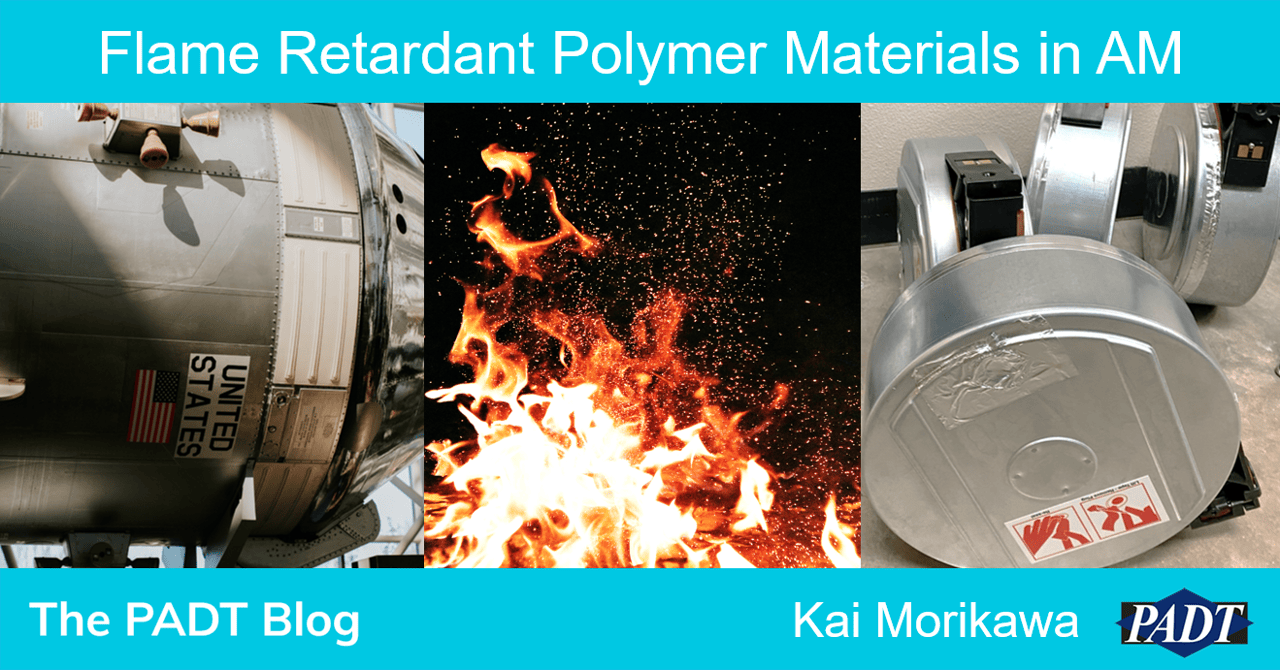Flame retardancy is the tendency of a material to extinguish a flame after ignition. This is a crucial material property in many applications of 3D printed parts, most notably the FAA (Federal Aviation Administration), as well as automotive, construction, and consumer goods that may utilize 3D printed parts in their assembly. Thankfully, multiple materials and printing techniques can increase the flame retardancy of common 3D printing materials. In this blog, we will look at various flame retardancy ratings/properties that are given to materials and the accompanying test methods to determine them.
Flame Retardancy Scale for Plastics
The most common rating given to AM plastics is a UL94 rating, which is the standard of safety for the flammability of plastic materials. The standard is released by Underwriters Laboratories (UL) of the United States. The ratings that can be given through this are outlined below, in descending order of most flame retardant to least:
- UL 94-5VA Surface Burn; Burning stops within 60 seconds, test specimens MAY NOT have a burn-through (no hole). This is the highest (most flame retardant) UL94 rating.
- UL 94-5VB Surface Burn; Burning stop within 60 seconds, test specimens MAY HAVE a burn-through (A hole may be present)
- UL 94 V-0 Vertical Burn; Burning stops within 10 seconds, NO flaming drips are allowed
- UL 94 V-1 Vertical Burn; Burning stops within 60 seconds, NO flaming drips are allowed
- UL 94 V-2 Vertical Burn; Burning stops within 60 seconds, Flaming drips ARE allowed.
- UL 94 H-B Horizontal Burn; Slow horizontal burn test (H-B) are considered “self-extinguishing”. The lowest (least flame retardant) UL94 rating.
Another important flame retardancy criterion is FAR 25.853, outlining the flammability requirements for use in aircraft. This test is designed by the FAA, and passing allows the 3D printed part to be used in certain components of aircraft.
Though it is not a standardized method, there is experimental work done on various printing methods that can improve the flame retardancy of a printed part. One such case is using a low infill on a FDM part, and filling the voids with some liquids that assist in extinguishing a flame once ignited.
Test Methods for Measuring Flame Retardancy
There are various test methods outlined by different standards, including but not limited to ASTM, ISO, and FAA. They mostly have differences in sample size and test rate, but similarity in that you are applying a flow of a flammable gas to ignite the test specimen to see its response in terms of its ability to extinguish/spread a flame.
Specifically, for the UL94 ratings, V-0, V-1, and V-2 ratings are done with samples placed vertically to determine its ability to extinguish itself while the flame is traveling vertically up a test specimen. For an HB rating to be given, samples are placed horizontally to determine its ability to extinguish itself while the flame is traveling horizontally across the test specimen.
See for example of vertical burn flame retardancy testing Flame resistance of PEEK and ULTEM™ AM9085F – YouTube Source: Roboze
Flame Retardant 3D Printing Materials
- Stratasys FDM PC-10 – UL94 H-B
- Stratasys FDM Ultem 9085 – UL94 V-0, FAR25.853
- Stratasys FDM Ultem 1010 – UL94 V-0, FAR25.853
- Stratasys FDM Antero 800NA and Antero 840CN03 – FAR 25.853
- Stratasys Direct Manufacturing SLS Nylon 11 FR – FAR25.853
- Stratasys Direct Manufacturing SLS Nylon 12 FR – FAR25.853
- ALM Nylon 11 FR-106– FAR25.853
- Carbon EPX 86 FR – UL 94 V-0, FAR 25.853
- Loctite 3D 3955 – UL 94 V-0
Explore Plastics Testing and Certification | UL Solutions for comprehensive information on plastic testing and certifications from UL Solutions. Dive into one of our customer case studies here and see how TE Connectivity was able to deliver end-use parts to meet strict aerospace requirements. For any further questions, please reach out to us at 3dprint@padtinc.com. We are here to assist you and provide personalized solutions based on your unique requirements for whatever your project(s) may consist of.
Follow us on Instagram for more 3D Printing and 3D Scanning content!
Written by Kai Morikawa



















